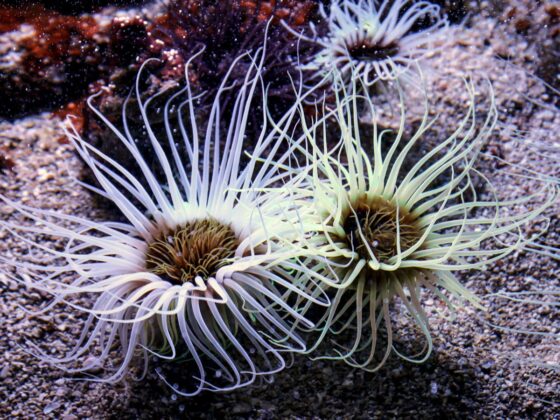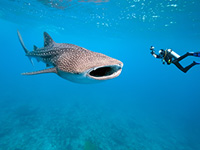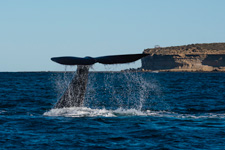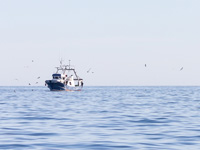Reviews: "Love the newsletters! Keep them coming" Janice Fleming...MORE REVIEWS

SCUBA News 292
(ISSN 1476-8011)
November 2024
~~~~~~~~~~~~~~~~~~~~~~~~~~~~
SCUBA News (ISSN 1476-8011)
Issue 292 - November 2024
https://www.scubatravel.co.uk
~~~~~~~~~~~~~~~~~~~~~~~~~~~~~
Welcome to November's SCUBA News. It's snowing here - hope the weather is more diveable where you are. Some ideas for trips to sunnier climes are below.
Any questions and comments to news@scubatravel.co.uk, I look forward to hearing from you.
Contents:
What's new at SCUBA Travel?
Creature of the Month: Fireworks Anemone
Liveaboard diving for under $1000: Save up to 50%!
Diving news from around the World
What's New at SCUBA Travel?
|
Bonaire has protected its waters since 1979, with turtles being protected since 1961. Not only are its reefs in good conditions, it also boasts the wreck of the Hilma Hooker, voted one of the best wreck dives in the world.
|
|
10 Great Dive Sites For Macro Photography In Southeast Asia Southeast Asia offers some of the world's best dive sites for underwater macro photography. From pygmy seahorses and colourful nudibranchs to rare crustaceans and frogfish, these sites are a dream for divers with an eye for the minute details of the underwater world.
|
|
Diving in Saudi Arabia is opening up With more liveaboards visiting little dived areas like Farasan Banks, where hammerheads, tiger sharks, manta rays and whale sharks, amongst other, visit.
|
6 Fantastic Liveaboard Deals - Save up to 50%
More great liveaboard diving deals, to some of the best diving destinations in the world, specially selected for us by Divebooker.com, the liveaboard specialists. Find diving deals for New Year and Christmas dates, some under $1000!
- Samira, Brothers, Daedalus, Elphinstone, SAVE 50% on some fantastic Red Sea diving with a chance to see hammerheads and oceanic whitetips plus beautiful coral. Price from GBP 481.
- The Junk, Thailand, SAVE 20%, Price from USD 800 in December. Visit the Similan and Surin islands on this beautiful, teak wood, boat.
- Sokaraja, Komodo, From USD 707 to dive Komodo, which, in my opinion, has some of the very best diving in the world. Caters for just 10 divers for empty dive sites.
- Princess Dhonkamana, Maldives,, Spend Christmas in the Maldives and SAVE26%. Price from just USD 2287 $1703 per trip per person.
- Galapagos Master,, SAVE 20% in November and December
- Royal Evolution, Deadalus and Sudan border , From just GBP 903. Visit the little dived Elba reef on the Sudanese border. Board at Port Ghalib in Egypt
Creature of the month: Fireworks Anemone
Those of us in the UK celebrated the 5th of November this month with bonfires and fireworks - commemorating a foiled plot to blow up the houses of parliament. So this month our creature is the rare Fireworks Anemone.

The Fireworks Anemone, scientifically known as Pachycerianthus multiplicatus, is a captivating marine species primarily found in the chilly waters of the North Sea and northeastern Atlantic. Known for its striking appearance and large size, this anemone graces the coasts of Britain, Ireland, Denmark, Sweden and Norway. However, in recent years, it has surprised scientists by appearing as an invasive species in the warmer waters of the Turkish Mediterranean, likely transported by ships from the Northeast Atlantic.
Large burrowing anemone
Unlike typical anemones, the Fireworks Anemone can reach impressive sizes, growing up to 30 cm tall and 30 cm across, making it one of the largest anemones in temperate waters. It lives in a burrow it creates in muddy seafloor bottoms, where it can extend and retract into a long tube over a meter in length. This tube offers protection as it anchors the anemone securely, allowing it to withdraw when threatened. Unfortunately, this burrowing habit makes the species vulnerable to human activity, particularly bottom trawling, which can destroy its habitat.

Named for its spectacular appearance, the Fireworks Anemone features two distinctive rows of tentacles that resemble a radiant firework display. The outer row of tentacles is typically white, forming a striking perimeter around the anemone, while the inner, shorter row of tentacles are darker.
No cloning
Unlike many other anemones that reproduce asexually, the Fireworks Anemone relies solely on sexual reproduction. Males release their gametes first, which triggers nearby females to release eggs. This synchronized spawning enhances the likelihood of fertilization in the open ocean.
The Fireworks Anemone is more than just an underwater beauty; offering shelter to other species and contributing to the biodiversity of its habitat. As an unexpected newcomer to the Mediterranean, it highlights the impact of human activity on species distribution and emphasises the importance of protecting fragile marine habitats.
The Fireworks Anemone is part of the Cerianthidae family, closely related to the Cerianthus anemones.

References
L. G. Jonsson et al, Symbiotic associations between anthozoans and crustaceans in a temperate coastal area. Mar Ecol Prog Ser Vol. 209: 189-195, 2001
M. E. Cinar et al, Checklist of Cnidaria and Ctenophora from the coasts of Turkey Turkish Journal of Zoology Vol 38 (2014)
Taxonomy
Phylum: Cnidaria > Class: Anthozoa > Order: Spirularia > Family: Cerianthidae > Genus: Pachycerianthus
Diving news from around the World
|
|
Another Red Sea liveaboard sinks
|
|
|
Coast guard shows dive boat location of missing divers
|
|
|
World's largest coral colony found in the Solomon Islands
|
|
|
Southern right whale numbers increase in Great Australian Bight Marine Park but new threats emerge
|
|
|
Young again: study shows that comb jellies can age in reverse
|
|
|
Plastic on beaches can now be seen from space
|
|
|
New Zealand trawler hauls up 37 kg of coral
|
|
|
Plastic junk sounds like tasty food to some whales
|
|
|
Chlorine and cocoa butter could protect corals from disease and decrease antibiotic pollution of the oceans
|
|
|
Chlorine and cocoa butter could protect corals from disease and decrease antibiotic pollution of the oceans
|
SCUBA News is licensed under a Creative Commons Attribution 4.0 Unported License. This means we are happy for you to reuse our material for both commercial and non-commercial use as long as you: credit the name of the author, link back to the SCUBA Travel website and say if you have made any changes. Most photos though, are copyright the photographer. Please get in touch for details.
Photo credits: Tim Nicholson, Jill Studholme, Anita Floyd, Kampee P/DepositPhotos, Arturo de Frias Marques/CC BY-SA 4.0, divebooker.com.
UNSUBSCRIBING
Visit {?$optout_link?} to remove yourself from the mailing list. Any problems
contact news@scubatravel.co.uk.
ADVERTISING
Should you wish to advertise in SCUBA News, please
see the special offers at
https://www.scubatravel.co.uk/newsad.html
Other advertising opportunities are at
https://www.scubatravel.co.uk/diving-advertising.html
CONTACTING THE EDITOR
Please send your letters or press releases to:
Jill Studholme
SCUBA News
The Cliff
DE6 2HR
UK
news@scubatravel.co.uk
SCUBA News (ISSN 1476-8011)
Every month we send out a free newsletter featuring the best diving areas, underwater life, diving book reviews and interviews with authors. To receive this please fill in your e-mail address below. For an archive of previous issues see the SCUBA News page.




















